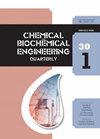聚羟基烷酸酯(PHA)生物聚酯——可持续发展和增长的循环材料
IF 0.9
4区 生物学
Q4 BIOTECHNOLOGY & APPLIED MICROBIOLOGY
引用次数: 7
摘要
实现材料的圆形需要对我们今天使用的聚合物及其生产方式进行根本性的改变。来自可再生原料的功能性聚合物材料与食品和动物饲料不冲突,并通过在不同环境条件下的生物降解进行更新,作为理想的报废选择,确实构成了当今塑料行业的范式转变。考虑到与化石塑料的处理或焚烧相关的日益严重的环境问题,微塑料的形成、食品污染和大气中二氧化碳浓度的上升,已经清楚地表明,开发具有类似塑料特性的替代、创新和可持续聚合物的时机已经成熟。在这一点上,本综述对生物基生物聚酯的好处以及同时可生物降解的微生物聚羟基烷酸酯(PHA)生物聚酯的优点进行了新的阐述。特别强调的是通过这些迷人的天然材料的生物降解性和可堆肥性实现碳的可回收性,这些材料正在缓慢但肯定地商业化,以取代每年数百万吨规模生产和处理的化石塑料,从而导致日益严重的环境威胁。这篇综述强调,PHA的报废选择类似于甚至优于另一种来自自然界的众所周知的聚合物纤维素,而PHA提供了使用中的塑料的额外特性,具有量身定制的性能。最后,该综述展示了PHA生物聚酯如何有助于实现许多备受讨论和期望的联合国可持续发展目标。本文章由计算机程序翻译,如有差异,请以英文原文为准。
Polyhydroxyalkanoate (PHA) Bio-polyesters – Circular Materials for Sustainable Development and Growth
Achieving circularity in materials requires fundamental changes in the polymers we use today and the way they are produced. Functional polymeric materials from renewable feedstocks that do not conflict with food and animal feed, and their renewal through biodegradation under diverse environmental conditions as the desired end-of-life option indeed constitute a paradigm shift for today’s plastics industry. Considering the ever-in-creasing environmental problems associated with the disposal or incineration of fossil plastics, the increasing microplastic formation, food contamination, and rising atmospheric CO 2 concentrations, have made it clear that the time is ripe for alternative, inno-vative, and sustainable polymers with plastic-like properties. In this nexus, the present review shines new light on the benefits of biobased and, at the same time, biodegradable microbial polyhydroxyalkanoate (PHA) biopolyesters. Special emphasis is dedicated to carbon recyclability through biodegradability and compostability of these fascinating natural materials, which are slowly but surely being commercialized as replacement for fossil plastics that are produced and disposed of in multi-million-ton scale annually, resulting in a growing environmental threat. This review highlights that end-of-life options of PHA are analogous or even superior to another well-known polymer from nature, cellulose, while PHA offer the additional attributes of plastics in use with tailor-made properties. Finally, the review demonstrates how PHA biopolyesters can contribute to reaching many of the heavily discussed and desired UN Sustainable Development Goals.
求助全文
通过发布文献求助,成功后即可免费获取论文全文。
去求助
来源期刊
CiteScore
2.70
自引率
6.70%
发文量
23
审稿时长
>12 weeks
期刊介绍:
The journal provides an international forum for presentation of original papers, reviews and discussions on the latest developments in chemical and biochemical engineering. The scope of the journal is wide and no limitation except relevance to chemical and biochemical engineering is required.
The criteria for the acceptance of papers are originality, quality of work and clarity of style. All papers are subject to reviewing by at least two international experts (blind peer review).
The language of the journal is English. Final versions of the manuscripts are subject to metric (SI units and IUPAC recommendations) and English language reviewing.
Editor and Editorial board make the final decision about acceptance of a manuscript.
Page charges are excluded.

 求助内容:
求助内容: 应助结果提醒方式:
应助结果提醒方式:


